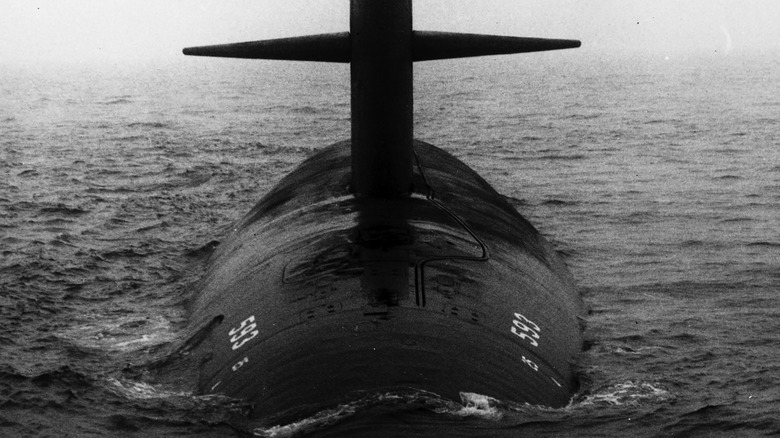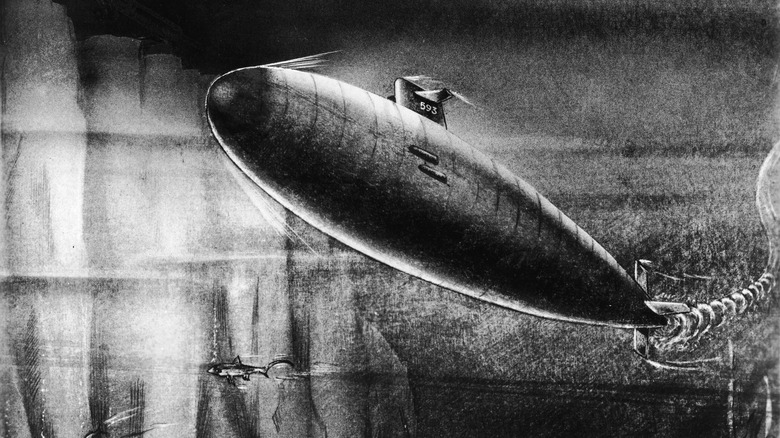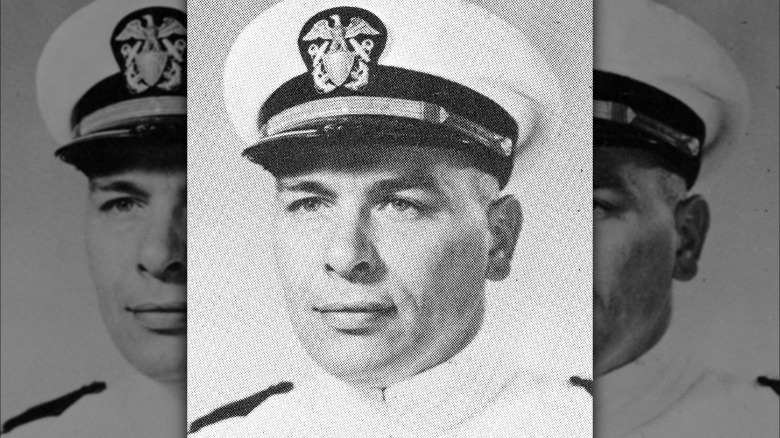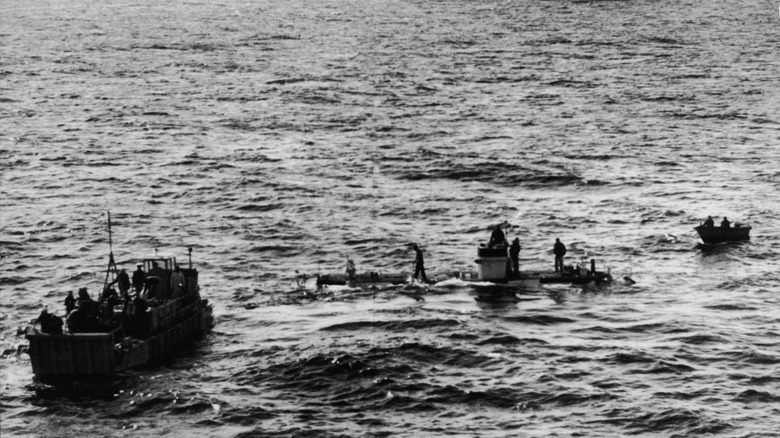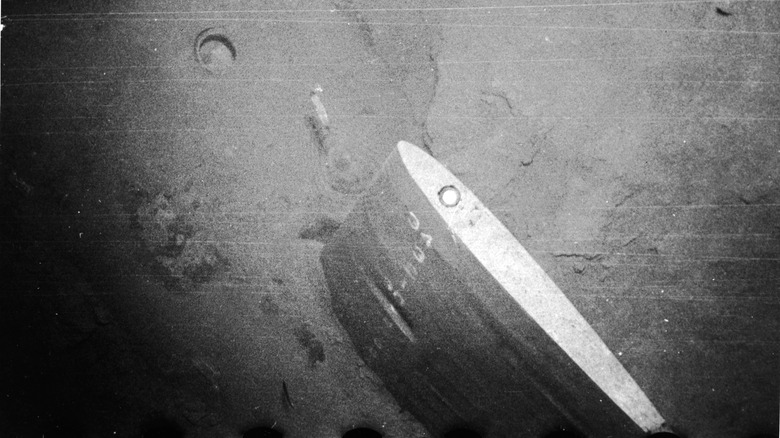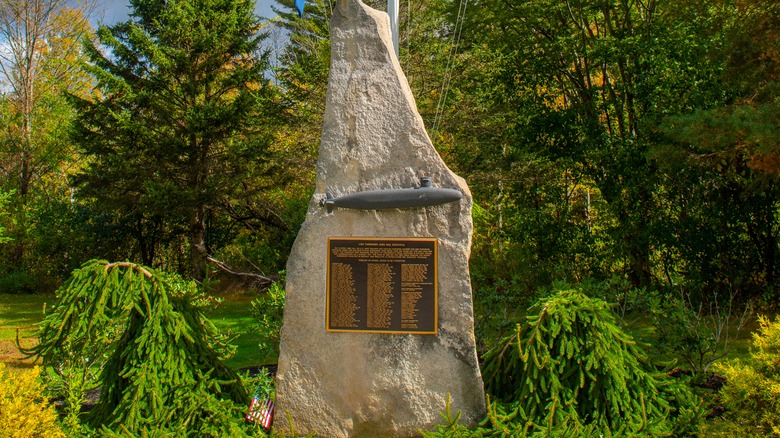The USS Thresher's Sinking Was Worse Than You Thought
On April 9, 1963, the USS Thresher left the Portsmouth Naval Shipyard in Kittery, Maine, and headed out to the North Atlantic. This submarine represented the top of the line of the United States' maritime technology. The Thresher was a new type of nuclear-powered submarine packed with technology that made her fast and stealthy and allowed her to dive deeper than any sub that had come before.
The Thresher carried 129 men — including 17 civilian technicians — and while serving on a submarine was a highly regimented and often disorienting affair, her crew was proud to be aboard this vanguard hunter-killer during the heart of the Cold War between the West and the Soviets. But less than 24 hours later a shocking fate befell the ship and her crew during a deep test dive from which she never returned. And, even more tragically, it could have been prevented. The Navy later determined faulty welding caused a leak that shut down the Thresher's electrical systems causing her to slowly sink to the bottom of the North Atlantic.
All communication lost
The USS Thresher was about 220 miles off the coast of Cape Cod when, after a series of shallow dives, the submarine began its dive to 1,300 feet. The Thresher had been at the Navy yard for several months getting improvements and repairs and this mission was to make sure everything was working as it should. Above her on the surface, a submarine rescue ship, the Skylark, kept in contact with the Thresher. And while the communication between them was spotty, aboard the Thresher there was no sense of distress as they continued to descend. Then, suddenly, all communication ceased.
In a few days, the world learned what had befallen the men of the Thresher, but it took more than a year to find the actual submarine. As the search for the Thresher began, Navy officials told the families of her crew that the submarine was "overdue and presumed missing," a statement that dangled a modicum of hope that their sons, husbands, siblings, and fathers might still be alive. Many of the families ran with this, believing the Thresher would soon be coming home.
Crew's families held out hope
Three months before the disaster, Lt. Cmdr. John Harvey (pictured) became the captain of the USS Thresher, which was launched in July 1960. It was the 35-year-old's first command. He was a Naval Academy graduate, married, and had two young sons, aged 8 and 11. When the news of the Thresher's disappearance reached Harvey's mother, she believed he was still alive. "I have great faith in God and in my son," she told United Press International on the day the Thresher went missing. "He is a splendid nuclear man. If anything can be done, he'll do it."
She was not alone in hoping beyond hope the men of the Thresher had somehow survived. The families of the crew believed the Thresher had just gotten off course rather than the unfathomable possibility it was lying at the bottom of the ocean. "They are coming into port," the mother of crewman Robert Muise exclaimed in an interview. "I just know they are coming in. They can't be in that much trouble."
The search for the Thresher
The U.S. Navy quickly scrambled to locate the USS Thresher, sending two other submarines, the USS Seawolf and the USS Sunbird, along with other naval vessels to look for the lost sub. As the Seawolf plied the murky waters on the morning of April 11, 1963, its crew picked up what they believed were sounds coming from the Thresher. They even believed they'd heard a weak voice via underwater telephone. They continued to try to make contact but to no avail. While the Seawolf's crew heard something, it was unlikely that it was coming from their fellow sailors on the missing sub, according to experts.
"You could see the men on the Seawolf hoping against hope thinking the sound might be some survivors and recording them," Chris Drew, an author and military journalist, told Military.com in 2021. There's a lot of sounds in the ocean." The Navy eventually determined the USS Thresher imploded, a fate sometimes shared with other submarines, due to the immense water pressure after losing power and sinking below its hull's capacity. An implosion would have instantly killed the crew once the submarine sank to a depth of 2,400 feet.
USS Thresher found 8,500 feet down
On April 11, 1963, just a day after the USS Thresher disappeared, the U.S. Navy announced that based on the evidence it had thus far collected, including finding two oil slicks and various debris, they had indeed lost the submarine and the 129 members of its crew with it. Unlike the nearly dozen World War II submarines that were never found, the Navy eventually found the USS Thresher. But it would be almost a year and a half before the sad discovery of the submarine's hull.
The Navy, after spending nearly five months and thousands of hours and manpower, officially ended the search for the submarine's remains in September 1963. The search continued under the Office of Naval Research and in September 1964, the Trieste II, a deep-sea exploration vehicle called a bathyscaph, landed on top of part of the Thresher's hull. The crew of the Trieste II found four separate pieces of its hull — one embedded in the seafloor — 8,500 feet down. Because the wreckage site was so deep there was no chance of recovering any of the bodies from the submarine.
Years later families still mourn the dead
Over the years, the families of those who died on the USS Thresher have come together for various memorials related to the loss of the submarine. The crew's deaths have continued to resonate in the ensuing decades. In 2013, during a 50th anniversary memorial in Portsmouth, New Hampshire, more than 1,000 people, including widows, siblings, children, grandchildren, and great-grandchildren of the dead, attended the event. One widow that day mourned all her husband never got to experience. When Richard DeJardins, a mechanical engineer, died on board the submarine that day in 1963, he left behind his wife Elizabeth, who was five months pregnant, and two daughters.
"The saddest thing of all is that he's not able to enjoy his family," Elizabeth (who died in 2020) told The Portland Press Herald during the 2013 memorial. The USS Thresher was the first nuclear submarine in the world to go down. And with it, the nation suffered the worst submarine loss in its history in number of deaths. The submarine remains where it sank. Thankfully, there has been no discernible radiation leakage into the environment where it lies. The U.S. Navy continues to monitor the site.
